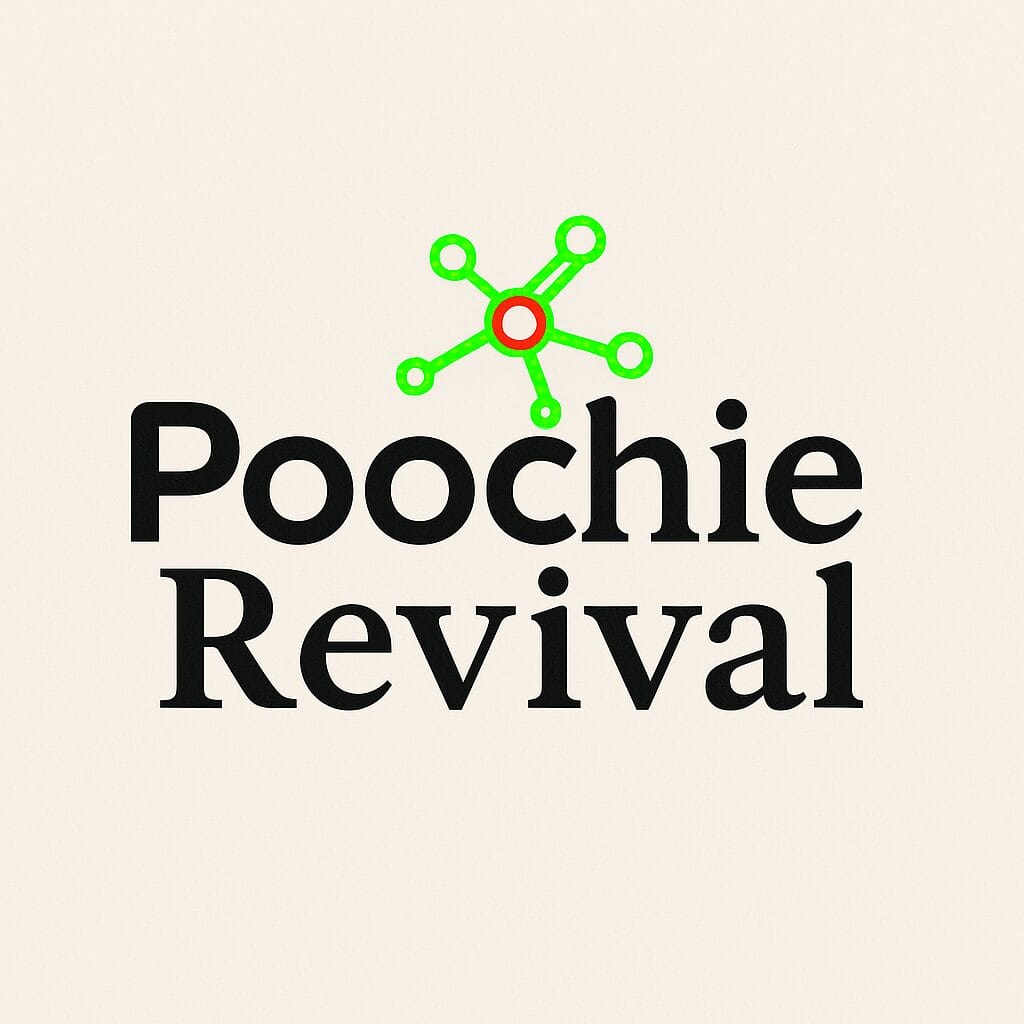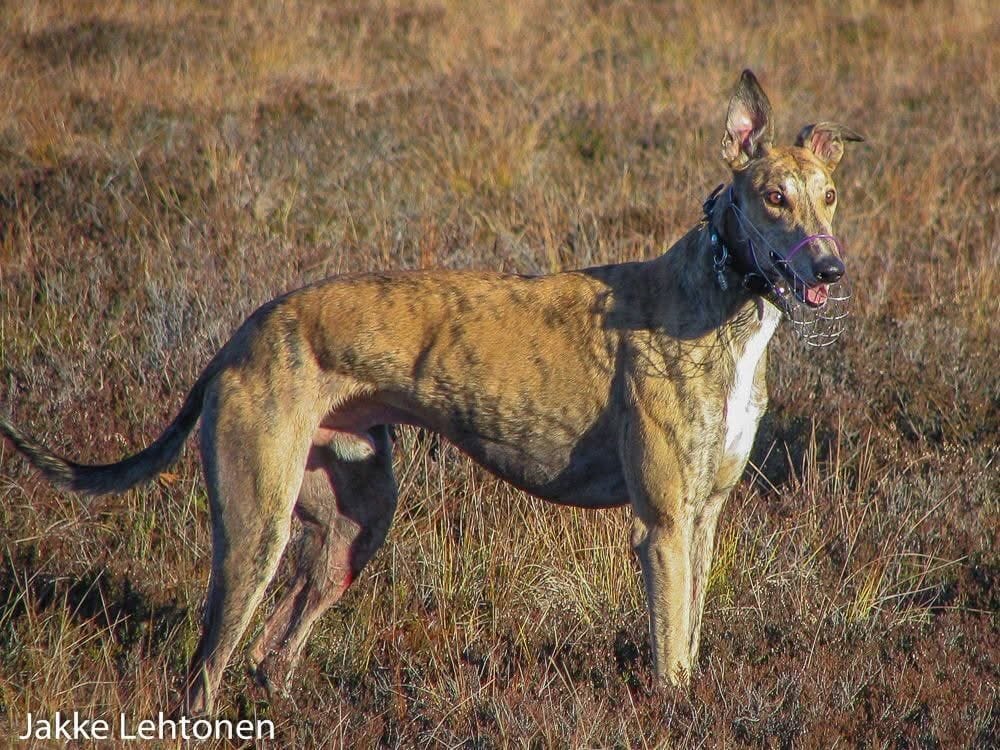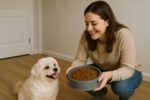One of the most common questions with healthy dogs is why a dog doesn’t gain weight on a certain food even when given in large amounts. This often comes up with dry food, especially with young and active dogs, but the problem is not unknown with raw feeding either. I would argue that weight gain issues are at least as common with meat-based feeding, but owners do not react, especially when the dog does not gain weight and stays slim.
I have often told several phone clients that my role often focuses on building the owner’s confidence. Most people know what they should do or change, but for some reason, their understanding and perception fail when it comes to their own dog. Of course, along the way, things are fixed, adjusted, and improved, but genuinely, most things are not new to people, at least if they have some dog experience. Apparently, it takes an outsider to kick them into action and say, “Wake up, you know what to do.”
Weight gain issues are on the same axis.
The reasons why food doesn’t stick to the sides are as many as there are dogs and feeders, but still, the reasons almost invariably focus on certain main categories. Of course, sometimes a dog slips into multiple categories.
The order is according to my own experience, by commonness:
- Giving too low-fat food
- Giving too little food (practically just a variation of the first)
- Giving poor quality food (in terms of raw material quality and goes hand in hand with the first and second)
- Giving too much food (variation of the first, sometimes also the third)
- The dog is sick
As you noticed, there are really only two reasons:
- The food portion is wrong compared to consumption and need
- The dog has a health issue affecting digestion
Most people know at this point what needs to be corrected. But I understand the difficulty because an effective correction requires more knowledge about the foods themselves.
And this must be added. When both reasons are combined, whether it’s
- pancreatitis and a zero-fat diet
- allergies and other intestinal problems with hypo and gastro foods
- kidney diseases and kidney foods
the result is not pretty or suitable for children to see.
I will say once again that I am happy to help with composing a suitable diet, as it is my profession, but the veterinarian should clean up their own mess after prescribing an ineffective supportive diet. The problem is that medicine is the only field in the world where the customer has to pay separately for the professional to try to correct the mistakes they’ve already billed for.
Wrong Food Portion
Most often, people do not give enough food. Since it is a claim of the owner’s mistake that they cause the dog’s thinness, it is also resisted the strongest. It’s hard to admit one’s blunders, even if they were only due to lack of skill. I can console you with my own history of minor blunders, that once you open up, admitting your failures is not only a relieving experience but also the only way to learn new things and correct the situation.
The first move is to forget the manufacturer’s recommendations and what others feed their dogs, and give more food.
Occasionally, it becomes apparent that the amount of food simply cannot be increased anymore. The freezer empties faster with one dog than in a medium-sized sled dog kennel, or all the salespeople at the local pet store, including temporary help, know you and you get VIP treatment as a valued regular customer. Then you are certainly putting enough food in the bowl, but the food does not provide calories. You are trying, in a way, to replace bacon with crispbread, or you’ve been told nonsense about how pollock is food (truly, pollock isn’t even good enough for fish and chips).
Forget everything you’ve been told about healthy food, and give something with a higher fat percentage than the old one. Of course, you can also tweak the food, for example, with a generous amount of butter, fish oil, or fatty yogurt. Usually, however, it’s more effective to change the entire food.
To make a simple thing a bit more complicated, let’s add one more factor with large portions. If a dog gets too much food, and in several servings, the efficiency of digestion weakens. One reason for this is simply the acceleration of bowel movement, as it needs to make room for new food. Then you’re in a situation where less is more – but this genuinely occurs less frequently.
Some dogs just don’t gain weight, at least not to the plump sizes of some breeds (not all retrievers gain weight either). It doesn’t matter how much food you give or how many megacalories it provides from fat. Nothing sticks to the sides. Then often less is more – or you’re in a situation where the food amount wasn’t as large and fatty as you thought.
Some dogs also need more carbohydrates, especially older dogs, so then forget the legends about the dangers of carbohydrates and wolves in wheat fields. Breed differences actually affect more than individual differences, although the individual determines its consumption. Sighthounds have genetic difficulties gaining weight, and similar can be found in other dogs as well.
The problem is that when the individual affects more than general rules of thumb, feeding must be individualized (genuinely individualized feeding is done very rarely) and then you’re in a situation where you need help.
Growing puppies belong to the worst category of not-gaining-weight-no-matter-what-you-do. When the growth spurt hits with full force, it’s practically impossible to provide food that has enough calories for growth and new construction, and also to build some fat on a body that almost overnight became much larger. That’s why with puppies, you anticipate the situation.
Growth always happens in spurts and in between, the puppy is fed as if it were larger and doing heavy work. Under no circumstances do you play with thinness by explaining the old and tired legend of health and joints. A thin puppy is always a skinny puppy.
Food Quality is Number One
Food quality is important. People know this, but somewhere along the line, amidst advertising promises and other crossfire of misinformation and disinformation about dog nutrition, the focus on what is genuinely important has been lost. At the same time, human eating habits and related delusions and beliefs are mixed into the matter.
Then you’re in a situation where you’re trying to fatten a dog with cottage cheese, which as food is at most a weak protein supplement for sports dogs. Or necks and wings are considered good food because, with the BARF craze, meat companies found a way to get rid of poor-quality and completely unnecessary slaughter waste.
In the same axis are the brain-dead stories about the healthiness and usefulness of cow stomach. Or the nutritional value of lungs. Or how cartilage and tendons improve joints.
The correction is not to tally the fat percentages of poor-quality goods, because without good-quality protein and, for example, B vitamins, weight simply won’t increase. The solution is to switch to better-quality meat and perhaps give more of it than the previous food.
For dogs eating dry food, the matter is even easier.
Dry food is a whole, one big package. It contains what it contains. If it doesn’t suit the dog, then the dry food is changed. It doesn’t matter what the advertisements say, but if the dry food doesn’t maintain the dog’s weight, then that particular brand and quality do not suit the dog.
Most often, it’s worth changing the brand. Too many food brands actually make one or two variants, which are then slightly tweaked. You don’t get a real change even if you switch to another version. Plus, the most important thing: the fact that the food doesn’t work as it should based on its characteristics, i.e., nutritional values, always and without exception indicates problems with basic raw materials – which is a euphemism for poor quality.
For a lean dog, it’s worth trying puppy foods. They usually have slightly better quality than adult foods.
The rule used to be that puppy food is the active food for adults. Unfortunately, too many brands have moved to a way where puppy food is the same as adult maintenance food. You go around and come back to the situation where the brand doesn’t actually have more than one real version to offer.
Sick and Thin
If a dog’s thinness is due to digestive issues, then none of the above applies. They talk about healthy dogs that are fed with weight in mind. The sick do not belong to that group. They are fed based on symptoms, and then thinness is a consequence, not a cause.
The difference between a sick and a healthy thin dog is reasonably clear. If a dog has no other symptoms and is happy and energetic, then the issue is corrected with basic-level feeding changes. If a dog has any other symptoms, then completely different adjustments are made.
To make it not too easy, some problems that appear to be illnesses are actually a direct result of inappropriate food.
Feeding sick dogs is a completely separate art form, and no ordinary dog owner should be expected to know how to do it. Of course, Siberia and experience teach, but that comes over time. So don’t think alone!




